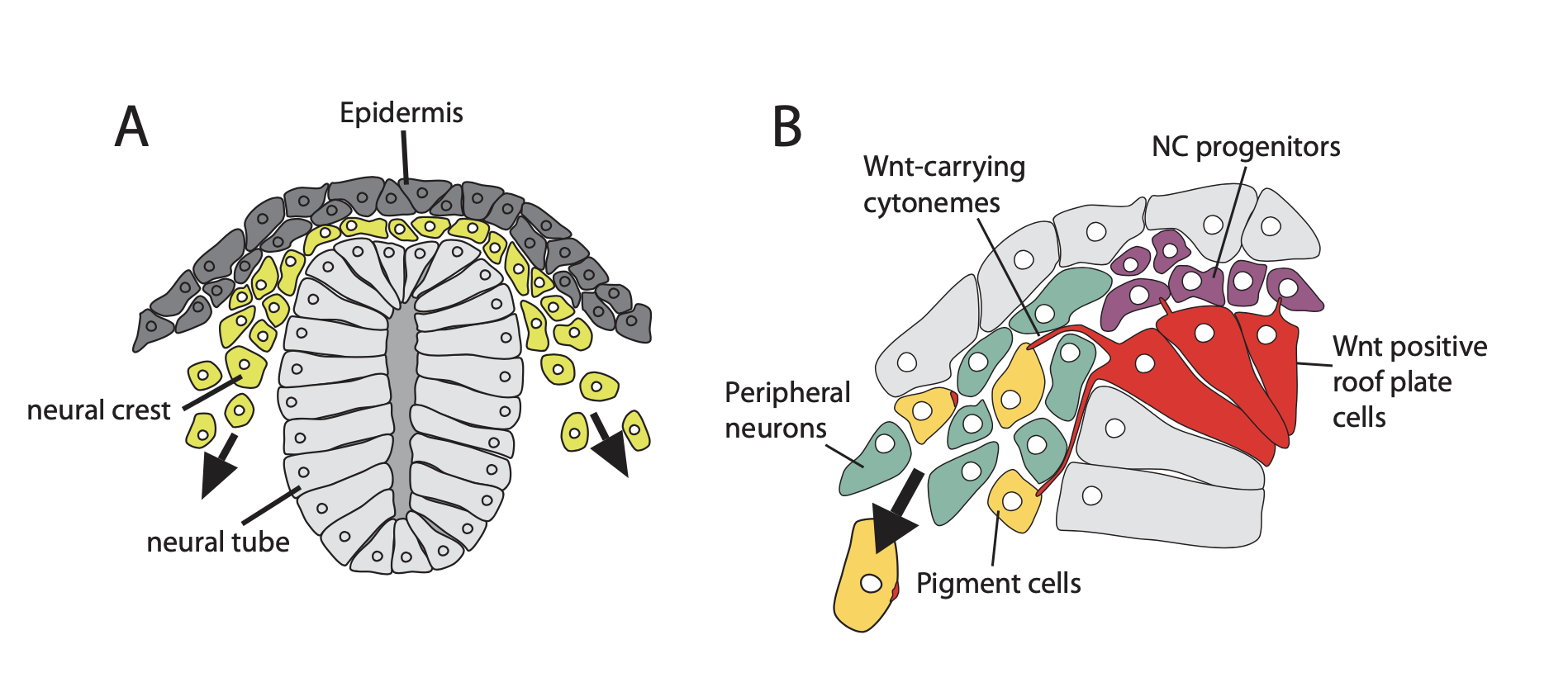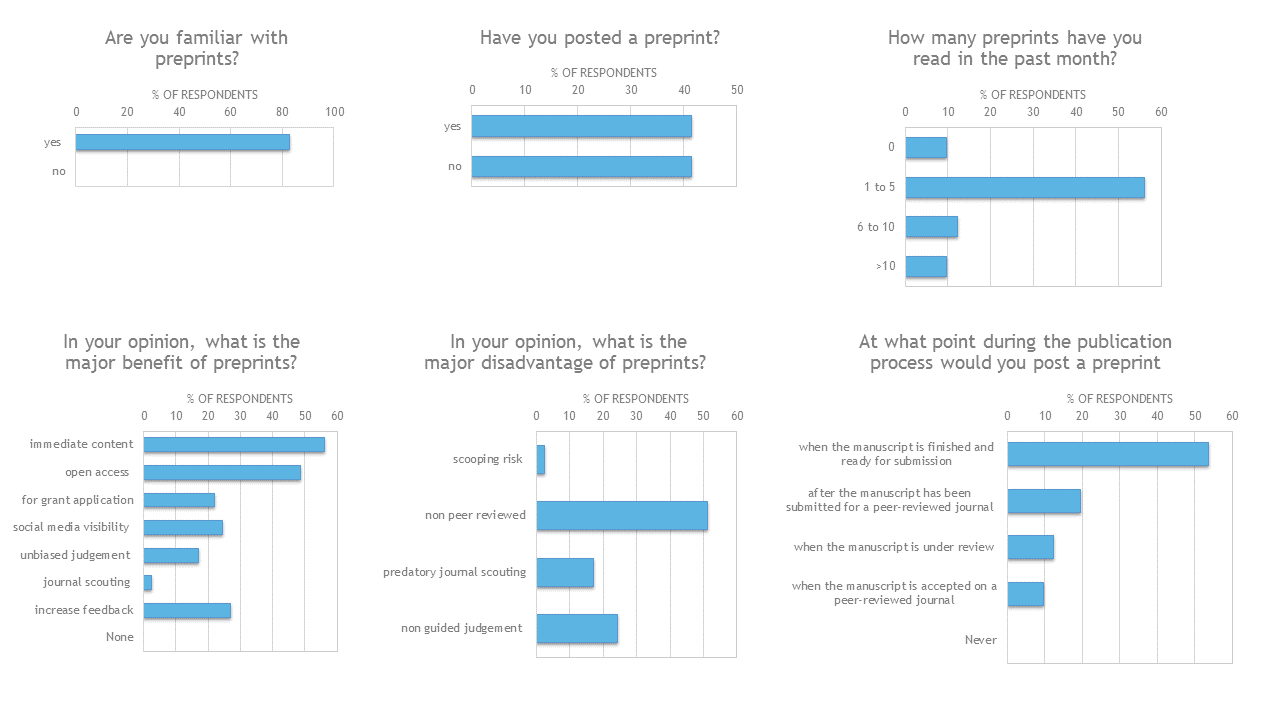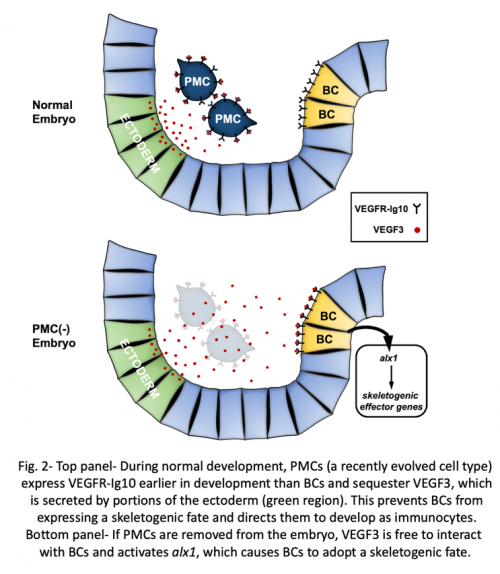November in preprints
Posted by the Node, on 2 December 2019
Welcome to our monthly trawl for developmental biology (and related) preprints.
This month we found preprints detailing extensive mouse and fly knockout resources, exploring bacterial influences on development, and investigating mechanics in vivo and in silico. They were hosted on bioRxiv and arXiv. Let us know if we missed anything. Use these links to get to the section you want:
Developmental biology
| Stem cells, regeneration & disease modelling
Evo-devo & evo
Cell biology
Modelling
Tools & resources
Research practice & education
Why not…
Developmental biology
| Patterning & signalling

Equilin does not affect thyroid hormone signaling in the developing Xenopus laevis tadpole brain
Robert G. Bass III, Zahabiya Husain, Lara Dahora, Christopher K. Thompson
Atypical Protein Kinase C iota (PKCλ/ι) Ensures Mammalian Development by Establishing the Maternal-Fetal Exchange Interface
Bhaswati Bhattacharya, Pratik Home, Avishek Ganguly, Soma Ray, Ananya Ghosh, Rashedul Islam, Valerie French, Courtney Marsh, Sumedha Gunewardena, Hiroaki Okae, Takahiro Arima, Soumen Paul
Transient Nodal signalling in left precursors coordinates opposed asymmetries shaping the heart loop
Audrey Desgrange, Jean-François Le Garrec, Ségolène Bernheim, Tobias Holm Bønnelykke, Sigolène M. Meilhac
Arkadia via SNON enables NODAL-SMAD2/3 signaling effectors to transcribe different genes depending on their levels
Jonathon M. Carthy, Marilia Ioannou, Vasso Episkopou
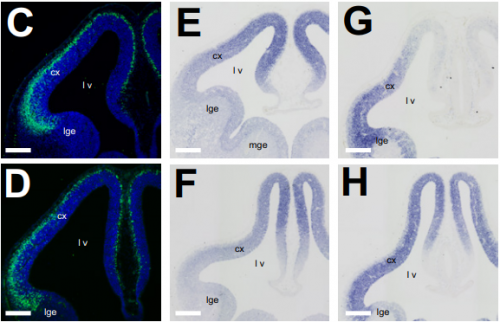
Combined modulation of SHH and FGF signaling is crucial for maintenance of the neocortical progenitor specification program
Odessa R. Yabut, Hui-Xuan Ng, Keejung Yoon, Hector G. Gomez, Jessica C. Arela, Samuel J. Pleasure
Synaptogenic activity of the axon guidance molecule Robo2 is critical for hippocampal circuit function
Heike Blockus, Sebastian V. Rolotti, Miklos Szoboszlay, Tiffany Ming, Anna Schroeder, Kristel M. Vennekens, Phinikoula Katsamba, Fabiana Bahna, Seetha Mannepalli, Goran Ahlsen, Barry Honig, Lawrence Shapiro, Joris de Wit, Attila Losonczy, Franck Polleux
Fate of developmental mechanisms of myocardial plasticity in the postnatal heart
Konstantinos E. Hatzistergos, Michael A. Durante, Krystalenia Valasaki, J. William Harbour, Joshua M. Hare
Tfam knockdown results in reduction of mtDNA copy number, OXPHOS deficiency and abnormalities in zebrafish embryos
Auke BC Otten, Rick Kamps, Patrick Lindsey, Mike Gerards, Hélène Pendeville-Samain, Marc Muller, Florence HJ van Tienen, Hubert JM Smeets
DRP1-mediated regulation of mitochondrial dynamics determines the apoptotic response upon embryonic differentiation
Barbara Pernaute, Juan Miguel Sánchez Nieto, Salvador Pérez-Montero, Aida di Gregorio, Ana Lima, Katerina Lawlor, Sarah Bowling, Gianmaria Liccardi, Alejandra Tomás, Pascal Meier, Guy A. Rutter, Ivana Barbaric, Tristan A. Rodríguez
NLRP7 Plays A Functional Role in Regulating BMP4 Signaling During Differentiation of Patient-Derived Trophoblasts
Aybuke Garipcan, Burcu Ozcimen, Ilke Suder, Volkan Ulker, Tamer Tevfik Onder, Nesrin Ozoren

Trophoblast paracrine signaling regulates placental hematoendothelial niche
Pratik Home, Ananya Ghosh, Ram Parikshan Kumar, Avishek Ganguly, Bhaswati Bhattacharya, Md. Rashedul Islam, Soma Ray, Sumedha Gunewardena, Soumen Paul
Chronic cortisol exposure in early development leads to neuroendocrine dysregulation in adulthood
Ellen I. Hartig, Shusen Zhu, Benjamin L. King, James A. Coffman
S1P-S1PR1 activity controls VEGF-A signaling during lymphatic vessel development
AM Golding-Ochsenbein, S Vidal, B Wilmering Wetter, C Guibourdenche, C Beerli, L Chang, S Leonhard, N Holway, K Seuwen, G Jurisic
Epithelial Vegfa specifies a distinct endothelial population in the mouse lung
Lisandra Vila Ellis, Margo P Cain, Vera Hutchison, Per Flodby, Edward D Crandall, Zea Borok, Bin Zhou, Edwin J Ostrin, Joshua D Wythe, Jichao Chen
Chemokine receptors ACKR2 and CCR1 coordinate macrophage dynamics and mammary gland development
Gillian J Wilson, Ayumi Fukuoka, Samantha R Love, Jiwon Kim, Marieke Pingen, Alan J Hayes, Gerard J Graham
Apcdd1 is a dual BMP/Wnt inhibitor in the developing nervous system and skin
Alin Vonica, Neha Bhat, Keith Phan, Jinbai Guo, Lăcrimioara Iancu, Jessica A. Weber, Amir Karger, John W. Cain, Etienne C. E. Wang, Gina M. DeStefano, Anne H. O’Donnell-Luria, Angela M. Christiano, Bruce Riley, Samantha J. Butler, Victor Luria
Wnt Regulation: Exploring Axin-Disheveled interactions and defining mechanisms by which the SCF E3 ubiquitin ligase is recruited to the destruction complex
Kristina N. Schaefer, Mira Pronobis, Clara E. Williams, Shiping Zhang, Lauren Bauer, Dennis Goldfarb, Feng Yan, M. Ben Major, Mark Peifer
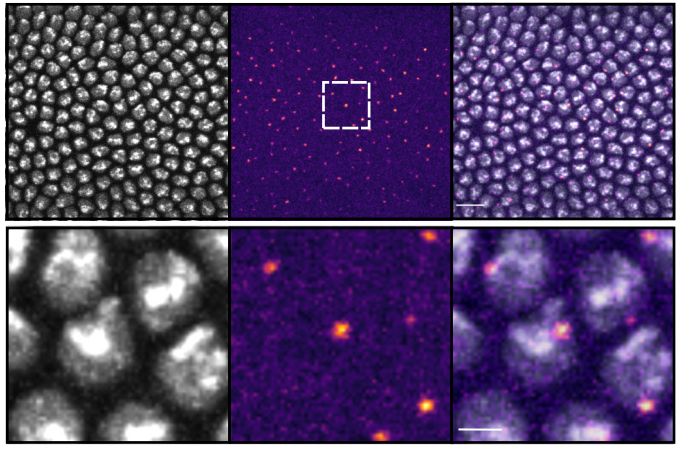
Modulation of promoter occupancy dictates the transcriptional response to graded BMP signalling levels in the Drosophila embryo
Caroline Hoppe, Jonathan Bowles, Thomas G Minchington, Catherine Sutcliffe, Priyanka Upadhyai, Magnus Rattray, Hilary L Ashe
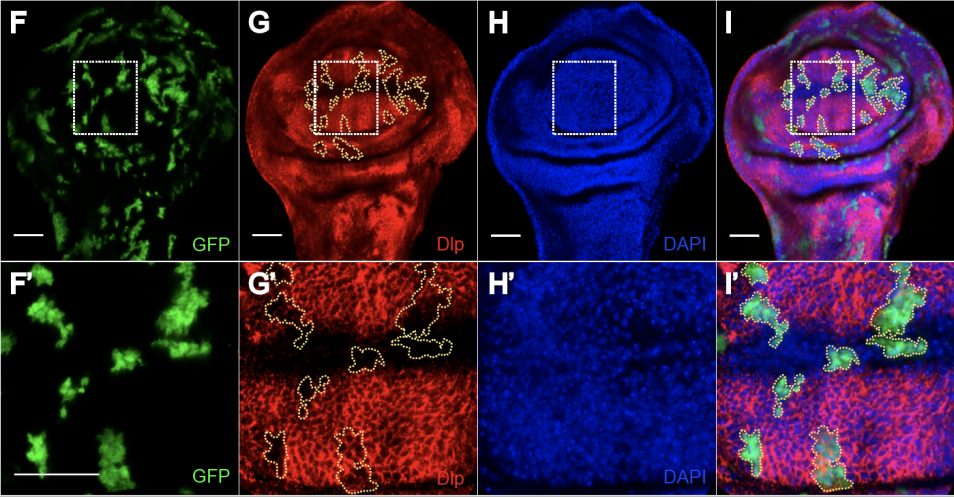
Feedback control of morphogen gradient scale
Yilun Zhu, Yuchi Qiu, Weitao Chen, Qing Nie, Arthur D. Lander
Transneuronal interactions facilitate axonal compartment formation
Bavat Bornstein, Idan Alyagor, Victoria Berkun, Hagar Meltzer, Fabienne Reh, Hadas Keren-Shaul, Eyal David, Thomas Riemensperger, Oren Schuldiner
The assembly of the Drosophila mushroom body circuit and its regulation by Semaphorin 1a
Chen-Han Lin, Suewei Lin
The Golgi Glycoprotein MGAT4D is an Intrinsic Protector of Testicular Germ Cells From Mild Heat Stress
Ayodele Akintayo, Meng Liang, Boris Bartholdy, Frank Batista, Jennifer Aguilan, Jillian Prendergast, Subha Sundaram, Pamela Stanley
A cell fate switch in the C. elegans seam cell lineage occurs through modulation of the Wnt asymmetry pathway in response to temperature increase
Mark Hintze, Sneha L. Koneru, Sophie P.R. Gilbert, Dimitris Katsanos, Michalis Barkoulas
| Morphogenesis & mechanics
Cell lineage-dependent chiral actomyosin flows drive cellular rearrangements in early development
Lokesh Pimpale, Teije C. Middelkoop, Alexander Mietke, Stephan W. Grill
Brownian-like deviation of neighboring cells in the early embryogenesis of the zebrafish
Juan Raphael Diaz Simoes (LPMC), Denis Grebenkov (LPMC), Paul Bourgine, Nadine Peyriéras
Caenorhabditis elegans PIEZO Channel Coordinates Multiple Reproductive Tissues to Govern Ovulation
Xiaofei Bai, Jeff Bouffard, Avery Lord, Katherine Brugman, Paul W. Sternberg, Erin J. Cram, Andy Golden
Redox signaling modulates Rho activity and tissue contractility in the C. elegans spermatheca
Charlotte A. Kelley, Sasha De Henau, Liam Bell, Tobias B. Dansen, Erin J. Cram

The Reissner Fiber is Highly Dynamic in vivo and Controls Morphogenesis of the Spine
Benjamin Troutwine, Paul Gontarz, Ryoko Minowa, Adrian Monstad-Rios, Mia J. Konjikusic, Diane S. Sepich, Ronald Y. Kwon, Lilianna Solnica-Krezel, Ryan S. Gray
Chemokine-biased robust self-organizing polarization of migrating cells in vivo
Adan Olguin-Olguin, Anne Aalto, Benoit Maugis, Michal Reichman-Fried, Erez Raz
Cell-fate plasticity, adhesion and cell sorting complementarily establish a sharp midbrain-hindbrain boundary
Gokul Kesavan, Stefan Hans, Michael Brand
Cytokinesis and post-abscission midbody remnants are regulated during mammalian brain development
Katrina C. McNeely, Noelle D. Dwyer
Alpha 6 Integrins Regulate the Expression of Laminin-511 and CXCR4 to Promote Endothelial Tubular Morphogenesis
Hao Xu, Kevin Pumiglia, Susan E. LaFlamme
Mechanical plasticity of the ECM directs invasive branching morphogenesis in human mammary gland organoids
B. Buchmann, L.K. Meixner, P. Fernandez, F.P. Hutterer, M.K. Raich, C.H. Scheel, A.R. Bausch

Asymmetric Hapln1a drives regionalised cardiac ECM expansion and promotes heart morphogenesis during zebrafish development
Christopher J Derrick, Juliana Sánchez-Posada, Farah Hussein, Federico Tessadori, Eric JG Pollitt, Aaron M Savage, Robert N Wilkinson, Timothy J Chico, Fredericus JM van Eeden, Jeroen Bakkers, Emily S Noël
Primary cilium-dependent cAMP/PKA signaling at the centrosome regulates neuronal migration
Julie Stoufflet, Maxime Chaulet, Mohamed Doulazmi, Coralie Fouquet, Caroline Dubacq, Christine Métin, Alain Trembleau, Pierre Vincent, Isabelle Caillé
Microtubule-dependent protein trafficking promotes apical constriction during tissue invagination
Thao Phuong Le, SeYeon Chung
Different principles govern different scales of brain folding
Arka N Mallela, Hansen Deng, Alan Bush, Ezequiel Goldschmidt
Primary cilia are present on endothelial cells of the hyaloid vasculature but are not required for the development of the blood-retinal barrier
Lana M. Pollock, Brian Perkins, Bela Anand-Apte

The lhfpl5 ohnologs lhfpl5a and lhfpl5b are required for mechanotransduction in distinct populations of sensory hair cells in zebrafish.
Timothy Erickson, Itallia V Pacentine, Alexandra Venuto, Rachel Clemens, Teresa Nicolson
The Heparan Sulfate Proteoglycan Syndecan-1 Influences Local Bone Cell Communication via the RANKL/OPG Axis
Melanie Timmen, Heriburg Hidding, Martin Götte, Thaqif El Khassawna, Daniel Kronenberg, Richard Stange
Syndecan-3 enhances anabolic bone formation through WNT signalling
Francesca Manuela Johnson de Sousa Brito, Andrew Butcher, Addolorata Pisconti, Blandine Poulet, Amanda Prior, Gemma Charlesworth, Catherine Sperinck, Michele Scotto di Mase, George Bou-Gharios, Robert Jurgen van ’t Hof, Anna Daroszewska
Dynamic expression of MMP28 during cranial morphogenesis
Nadege Gouignard, Eric Theveneau, Jean-Pierre Saint-Jeannet
Pits and CtBP control tissue growth in Drosophila melanogaster with the Hippo pathway transcription repressor, Tgi
Joseph H.A. Vissers, Lucas G. Dent, Colin House, Shu Kondo, Kieran F. Harvey
Astral microtubule crosslinking by Feo safeguards uniform nuclear distribution in the Drosophila syncytium
Ojas Deshpande, Jorge de-Carvalho, Diana M Vieira, Ivo Andreas Telley
Microtubule-dependent protein trafficking promotes apical constriction during tissue invagination
Thao Phuong Le, SeYeon Chung
The engulfment receptor Draper organizes the postsynaptic spectrin cytoskeleton into corrals containing synaptic proteins and promotes synaptic renewal
Simon Wang, Mannan Wang, Hae-yoon Kim, Nicole Yoo, Matias Raski, Claire Shih, Clare Zheng, Kevin Tran, Wade Parkhouse, Charles Krieger, Nicholas Harden
Regionalized tissue fluidization by an actomyosin cable is required for epithelial gap closure during insect gastrulation
A. Jain, V. Ulman, A. Mukherjee, M. Prakash, L. Pimpale, S. Muenster, R. Haase, K.A. Panfilio, F. Jug, S.W. Grill, P. Tomancak, A. Pavlopoulos
| Genes & genomes
Natural cryptic epigenetic variation in an embryonic gene regulatory network
Chee Kiang Ewe, Yamila N. Torres Cleuren, Russell G. Snell, Joel H. Rothman

mir-71 mediates age-dependent opposing contributions of the stress activated kinase KGB-1 in Caenorhabditis elegans
Cyrus Ruediger, Michael Shapira
DREAM Interrupted: Severing MuvB from DREAM’s pocket protein in Caenorhabditis elegans impairs gene repression but not DREAM chromatin assembly
Paul D. Goetsch, Susan Strome
Loss of histone H3.3 results in DNA replication defects and altered origin dynamics in C. elegans
Maude Strobino, Joanna M. Wenda, Florian A. Steiner
A Long Lost Key Opens an Ancient Lock: Drosophila Myb Causes a Synthetic Multivulval Phenotype in Nematodes
Paul J. Vorster, Paul Goetsch, Tilini U. Wijeratne, Keelan Z. Guiley, Laura Andrejka, Sarvind Tripathi, Braden J. Larson, Seth M. Rubin, Susan Strome, Joseph S. Lipsick
Odd-paired is a late-acting pioneer factor coordinating with Zelda to broadly regulate gene expression in early embryos
Theodora Koromila, Fan Gao, Yasuno Iwasaki, Peng He, Lior S Pachter, John Peter Gergen, Angelike Stathopoulos
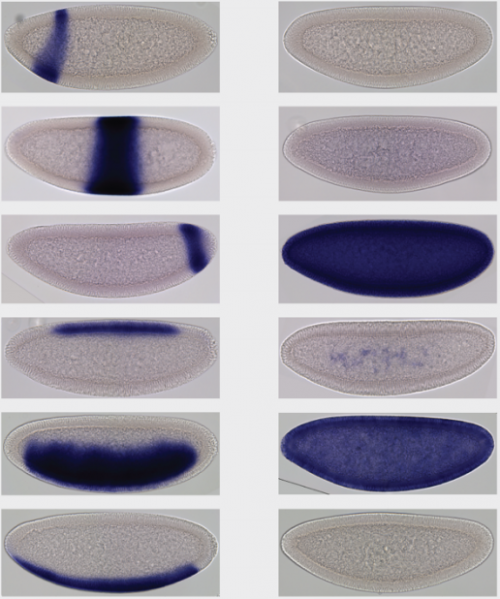
Zygotic pioneer factor activity of Odd-paired/Zic is necessary for establishing the Drosophila Segmentation Network
Isabella V. Soluri, Lauren M. Zumerling, Omar A. Payan Parra, Eleanor G. Clark, Shelby A. Blythe
Topology-driven analysis of protein-protein interaction networks detects functional genetic modules regulating reproductive capacity
Tarun Kumar, Leo Blondel, Cassandra G. Extavour
The PIWI protein Aubergine recruits eIF3 to activate translation in the germ plasm
Anne Ramat, Maria-Rosa Garcia-Silva, Camille Jahan, Rima Nait-Saidi, Jeremy Dufourt, Celine Garret, Aymeric Chartier, Julie Cremaschi, Vipul Patel, Mathilde Decourcelle, Amandine Bastide, Francois Juge, Martine Simonelig
Drosophila models of pathogenic copy-number variant genes show global and non-neuronal defects during development
Tanzeen Yusuff, Matthew Jensen, Sneha Yennawar, Lucilla Pizzo, Siddharth Karthikeyan, Dagny J. Gould, Avik Sarker, Yurika Matsui, Janani Iyer, Zhi-Chun Lai, Santhosh Girirajan
Neuronal upregulation of Prospero protein is driven by alternative mRNA polyadenylation and Syncrip-mediated mRNA stabilisation
Tamsin J. Samuels, Yoav Arava, Aino I. Järvelin, Francesca Robertson, Jeffrey Y. Lee, Lu Yang, Ching-Po Yang, Tzumin Lee, David Ish-Horowicz, Ilan Davis
Role of a versatile peptide motif in controlling Hox nuclear export and autophagy in the Drosophila fat body
Marilyne Duffraisse, Rachel Paul, Bruno Hudry, Julie Carnesecchi, Agnes Banretti, Jonathan Reboulet, Leiore Ajuria, Ingrid Lohmann, Samir Merabet

Dynamic neurotransmitter specific transcription factor expression profiles during Drosophila development
Alicia Estacio-Gómez, Amira Hassan, Emma Walmsley, Lily Lee, Tony D. Southall
High-Resolution Single-Cell Models of Ensemble Chromatin Structures during Drosophila Embryogenesis from Population Hi-C
Qiu Sun, Alan Perez-Rathke, Daniel M. Czajkowsky, Zhifeng Shao, Jie Liang
Sex chromosome pairing mediated by euchromatic homology in Drosophila male meiosis
Christopher A. Hylton, Katie Hansen, Andrew Bourgeois, John E. Tomkiel
dP75 safeguards oogenesis by preventing H3K9me2 spreading
Kun Dou, Yanchao Liu, Yingpei Zhang, Chenhui Wang, Ying Huang, ZZ Zhao Zhang
bsAS, an antisense long non-coding RNA, controls cell fate through regulation of blistered/DSRF isoform expression
Sílvia Pérez-Lluch, Alessandra Breschi, Cecilia C. Klein, Marina Ruiz-Romero, Amaya Abad, Emilio Palumbo, Lyazzat Bekish, Carme Arnan, Roderic Guigó
DCP2 plays multiple roles during Drosophila development – possible case of moonlighting?
Rohit Kunar, Jagat K Roy
Astrocyte-like glia-specific gene deathstar is crucial for normal development, adult locomotion and lifespan of male Drosophila
Hadi Najafi, Kyle Wong, Woo Jae Kim
Characterisation of protein isoforms encoded by the Drosophila Glycogen Synthase Kinase 3 gene shaggy
Dagmara Korona, Daniel J. H. Nightingale, Bertrand Fabre, Michael Nelson, Bettina Fischer, Glynnis Johnson, Jonathan Lees, Simon Hubbard, Kathryn Lilley, Steven Russell
Developmentally-orchestrated mitochondrial processes prime the selective inheritance against harmful mitochondrial DNA mutations
Zhe Chen, Zong-Heng Wang, Guofeng Zhang, Christopher K. E. Bleck, Dillon J. Chung, Grey Madison, Eric Lindberg, Christian Combs, Robert S. Balaban, Hong Xu
Maternal- and Somatic-type snoRNA Expression and Processing in Zebrafish Development
Johanna F.B. Pagano, Mauro D. Locati, Wim A Ensik, Marina van Olst, Selina van Leeuwen, Wim C. De Leeuw, Ulrike Nehrdich, Herman P Spaink, Han Rauwerda, Martijs J. Jonker, Rob J. Dekker, Timo M Breit
An alternative spliceosome defined by distinct snRNAs in early zebrafish embryogenesis
Johanna F.B. Pagano, Rob J Dekker, Wim A. Ensink, Marina van Olst, Alex Bos, Selina van Leeuwen, Wim C. de Leeuw, Ulrike Nehrdich, Herman P. Spaink, Han Rauwerda, Martijs J. Jonker, Timo M. Breit

Sox2 and Sox3 are essential for development and regeneration of the zebrafish lateral line
Cristian A. Undurraga, Yunzi Gou, Pablo C. Sandoval, Viviana A. Nuñez, Miguel L. Allende, Bruce B. Riley, Pedro P. Hernández, Andres F. Sarrazin
The conserved and divergent roles of Prdm3 and Prdm16 in zebrafish and mouse craniofacial development
Lomeli Shull, Rwik Sen, Johannes Menzel, Kristin Bruk Artinger
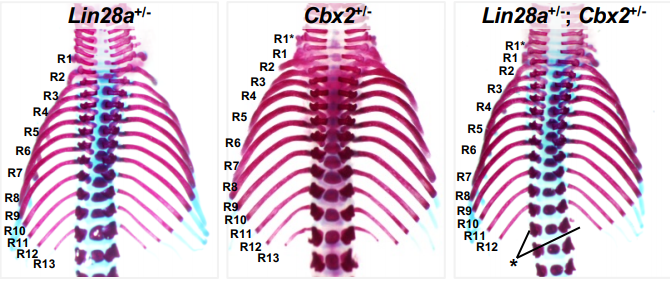
Lin28a/let-7 Pathway Modulates the Hox Code via Polycomb Regulation during Axial Patterning in Vertebrates
Tempei Sato, Kensuke Kataoka, Yoshiaki Ito, Shigetoshi Yokoyama, Masafumi Inui, Masaki Mori, Satoru Takahashi, Keiichi Akita, Shuji Takada, Hiroe Ueno-Kudoh, Hiroshi Asahara
A TBX5 dosage-sensitive gene regulatory network for human congenital heart disease
Irfan S. Kathiriya, Kavitha S. Rao, Giovanni Iacono, W. Patrick Devine, Swetansu K. Hota, Michael H. Lai, Bayardo I. Garay, Reuben Thomas, Andrew P. Blair, Henry Z. Gong, Lauren K. Wasson, Piyush Goyal, Tatyana Sukonnik, Gunes A. Akgun, Laure D. Bernard, Brynn N. Akerberg, Fei Gu, Kai Li, William T. Pu, Joshua M. Stuart, Christine E. Seidman, J. G. Seidman, Holger Heyn, Benoit G. Bruneau
Dppa2/4 target chromatin bivalency enabling multi-lineage commitment
Mélanie A. Eckersley-Maslin, Aled Parry, Marloes Blotenburg, Christel Krueger, Valar Nila Roamio Franklin, Stephen J. Clark, Clive S. D’Santos, Wolf Reik

Cis-regulatory analysis of Onecut1 expression in fate-restricted retinal progenitor cells
Sruti Patoori, Nathalie Jean-Charles, Ariana Gopal, Sacha Sulaiman, Sneha Gopal, Brian Wang, Benjamin Souferi, Mark M. Emerson
Transcription factors protect from DNA re-methylation during reprograming of primordial germ cells and pre-implantation embryos
Isaac Kremsky, Victor G. Corces
Suppression of DSB Formation by Polβ in Active DNA Demethylation is Required for Postnatal Hippocampal Development
Akiko Uyeda, Kohei Onishi, Teruyoshi Hirayama, Satoko Hattori, Tsuyoshi Miyakawa, Takeshi Yagi, Nobuhiko Yamamoto, Noriyuki Sugo
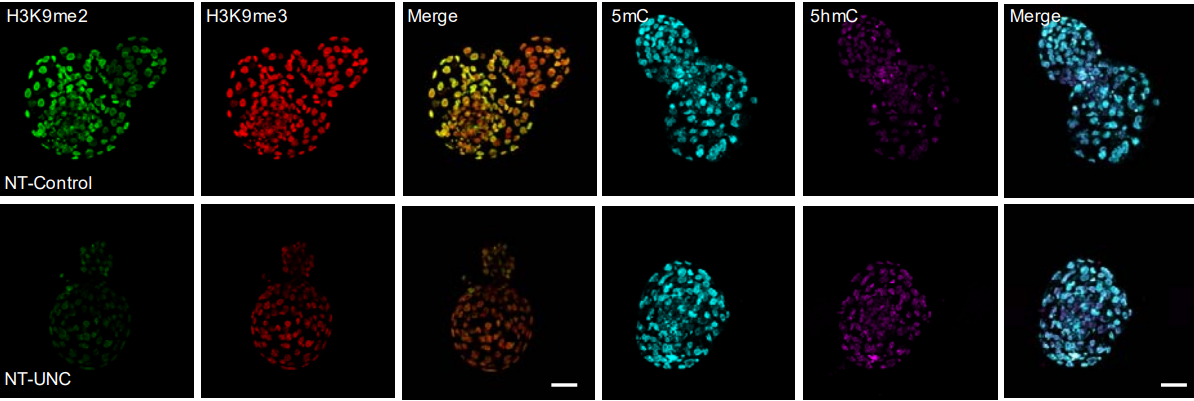
Catalytic inhibition of H3K9me2 writers disturbs epigenetic marks during bovine nuclear reprogramming
RV Sampaio, JR Sangalli, THC De Bem, DR Ambrizi, M del Collado, A Bridi, ACFCM Ávila, CH Macabelli, LJ Oliveira, JC da Silveira, MR Chiaratti, F Perecin, FF Bressan, LC Smith, PJ Ross, FV Meirelles

Escort-like somatic cells mediate early mouse fetal ovarian development but surface-derived Lgr5+ cells support primordial follicles
Wanbao Niu, Allan C. Spradling
Diversification of Reprogramming Trajectories Revealed by Parallel Single-cell Transcriptome and Chromatin Accessibility Sequencing
Qiaorui Xing, Chadi El Farran, Pradeep Gautam, Yu Song Chuah, Tushar Warrier, Cheng-Xu Delon Toh, Nam-Young Kang, Shigeki Sugii, Young-Tae Chang, Jian Xu, James Collins, George Daley, Hu Li, Li-Feng Zhang, Yuin-Han Loh
Emergence of neuronal diversity during vertebrate brain development
Bushra Raj, Jeffrey A. Farrell, Aaron McKenna, Jessica L. Leslie, Alexander F. Schier
A single-cell transcriptional atlas identifies extensive heterogeneity in the cellular composition of tendons
Jacob B Swanson, Andrea J De Micheli, Nathaniel P Disser, Leandro M Martinez, Nicholas R Walker, Benjamin D Cosgrove, Christopher L Mendias
Gene expression heterogeneity during brain development and aging: temporal changes and functional consequences
Ulas Isildak, Mehmet Somel, Janet Thornton, Handan Melike Donertas
Testes of DAZL null sheep lack spermatogonia and maintain normal somatic cells
Zachariah McLean, Sarah Jane Appleby, Jingwei Wei, Russell Grant Snell, Bjorn Oback
The 3D genome shapes the regulatory code of developmental genes
Julien Mozziconacci (LPTMC, MNHN), Mélody Merle (LPTMC), Annick Lesne (LPTMC, IGMM)
| Stem cells, regeneration & disease modelling
Quantitative classification of chromatin dynamics reveals regulators of intestinal stem cell differentiation
Jesse R Raab, Deepthi Y Tulasi, Kortney E Wager, Jeremy M Morowitz, Scott T Magness, Adam D Gracz
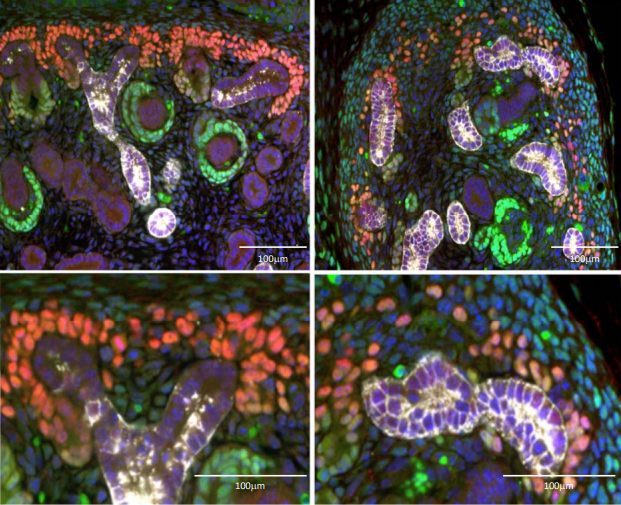
Paracrine and autocrine R-spondin signalling is essential for the maintenance and differentiation of renal stem cells
Valerie P.I. Vidal, Elodie Gregoire, Emmanuelle Szenker, Marc Leushacke, Bruno Reversade, Marie-Christine Chaboissier, Andreas Schedl
Mapping Human Pluripotent Stem Cell Derived Erythroid Differentiation by Single-Cell Transcriptome Analysis
Zijuan Xin, Wei Zhang, Shangjin Gong, Junwei Zhu, Yanming Li, Zhaojun Zhang, Xiangdong Fang
Genetically variant human pluripotent stem cells selectively eliminate wild-type counterparts through YAP-mediated cell competition
Christopher J. Price, Dylan Stavish, Paul J. Gokhale, Samantha Sargeant, Joanne Lacey, Tristan A. Rodriguez, Ivana Barbaric
Developmental trajectory of pre-hematopoietic stem cell formation from endothelium
Qin Zhu, Peng Gao, Joanna Tober, Laura Bennett, Changya Chen, Yasin Uzun, Yan Li, Melanie Mumau, Wenbao Yu, Bing He, Nancy A. Speck, Kai Tan
Transcriptional regulatory network controlling the ontogeny of hematopoietic stem cells
Peng Gao, Changya Chen, Elizabeth D. Howell, Yan Li, Joanna Tober, Yasin Uzun, Bing He, Long Gao, Qin Zhu, Arndt Siekmann, Nancy A. Speck, Kai Tan
Lfc/Arhgef2 regulates mitotic spindle orientation in hematopoietic stem and progenitor cells and is essential for productive hematopoiesis
Derek C.H. Chan, Ana Vujovic, Joshua Xu, Victor Gordon, Nicholas Wong, Laura P.M.H. de Rooij, Cailin E Joyce, Jose La Rose, Maria-Jose Sandi, Bradley W Doble, Carl D. Novina, Robert K. Rottapel, Kristin J Hope
Multi-differentiation potential is necessary for optimal tenogenesis of tendon stem cells
Ibtesam Rajpar, Jennifer G. Barrett
Evolving Transcriptomic Signature of Human Pluripotent Stem Cell-Derived Retinal Pigment Epithelium Cells With Age
Grace E. Lidgerwood, Anne Senabouth, Casey J.A. Smith-Anttila, Vikkitharan Gnanasambandapillai, Dominik C. Kaczorowski, Daniela Amann-Zalcenstein, Erica L. Fletcher, Shalin H. Naik, Alex W. Hewitt, Joseph Powell, Alice Pébay
Depletion of H3K79 methylation specifically enhances reprogramming to pluripotency but not transdifferentiation
Coral K Wille, Rupa Sridharan
Nucleosides rescue replication-mediated genome instability of human pluripotent stem cells
Jason A Halliwell, Thomas J.R. Frith, Christopher J Price, Owen Laing, Oliver J Bower, Dylan Stavish, Paul Gokhale, Zoe Hewitt, Sherif El-Khamisy, Ivana Barbaric, Peter W Andrews

Defining Essential Enhancer for Pluripotent stem cells using Features Oriented CRISPR-Cas9 Screen
Hao Fei Wang, Tushar Warrier, Chadi EL Farran, Zheng Zihao, Qiao Rui Xing, Melissa J Fullwood, Li-Feng Zhang, Hu Li, Jian Xu, Tit-Meng Lim, Yuin-Han Loh
Early Inhibition of Retinoic Acid Signaling Rapidly Generates Cardiomyocytes Expressing Ventricular Markers from Human Induced Pluripotent Stem Cells
Pranav Machiraju, Joshua Huang, Fatima Iqbal, Yiping Liu, Xuemei Wang, Chad Bousman, Steven C. Greenway
Oxidative and non-oxidative active turnover of genomic methylcytosine in distinct pluripotent states
Fabio Spada, Sarah Schiffers, Angie Kirchner, Yingqian Zhang, Olesea Kosmatchev, Eva Korytiakova, René Rahimoff, Charlotte Ebert, Thomas Carell
UFMylation of MRE11 is essential for maintenance of telomere length and hematopoietic stem cell survival
Lara Lee, Ana Belen Perez Oliva, Dmitri Churikov, Elena Martinez-Balsalobre, Joshua Peter, Dalicya Rahmouni, Gilles Audoly, Violette Azzoni, Stephane Audebert, Luc Camoin, Victoriano Mulero, Maria L. Cayuela, Vincent Geli, Yogesh Kulathu, Christophe Lachaud
G-Protein signaling accelerates stem cell divisions in Drosophila males
Manashree Malpe, Leon F. McSwain, Karl Kudyba, Chun L. Ng, Jennie Nicholson, Maximilian Brady, Yue Qian, Vinay Choksi, Alicia G. Hudson, Benjamin B. Parrott, Cordula Schulz
Energy Expenditure during Cell Spreading Induces AMPK Activation and Regulates the Mechanoresponse of Stem Cells
Jing Xie, Min Bao, Xinyu Hu, Werner J. H. Koopman, Wilhelm T. S. Huck
Direct synthesis of self-organized blastocyst-like cysts derived from human pluripotent stem cells
Xiaopeng Wen, Shiho Terada, Koki Yoshimoto, Ken-ichiro Kamei
Early life stress decreases the proliferation and numbers of adult hypothalamic neural stem cells
Pascal Bielefeld, Maralinde R. Abbink, Anna R. Davidson, Paul J. Lucassen, Aniko Korosi, Carlos P. Fitzsimons
Engrafted Human Induced Pluripotent Stem Cell-Derived Cardiomyocytes Undergo Clonal Expansion In Vivo
Danny El-Nachef, Darrian Bugg, Kevin M. Beussman, Amy M. Martinson, Charles E. Murry, Nathan J. Sniadecki, Jennifer Davis
Enhanced maturation of human stem cell derived interneurons by mTOR activation
Jianhua Chu, Megan L. Fitzgerald, Neha Sehgal, William Manley, Shane Fitzgerald, Harrison Naung, Ethan M. Goldberg, Stewart A. Anderson
Brainstem organoids from human pluripotent stem cells contain neural crest population
Nobuyuki Eura, Takeshi K. Matsui, Joachim Luginbühl, Masaya Matsubayashi, Hitoki Nanaura, Tomo Shiota, Kaoru Kinugawa, Naohiko Iguchi, Takao Kiriyama, Canbin Zheng, Tsukasa Kouno, Yan Jun Lan, Pornparn Kongpracha, Pattama Wiriyasermkul, Yoshihiko M. Sakaguchi, Riko Nagata, Tomoya Komeda, Naritaka Morikawa, Fumika Kitayoshi, Miyong Jong, Shinko Kobashigawa, Mari Nakanishi, Masatoshi Hasegawa, Yasuhiko Saito, Takashi Shiromizu, Yuhei Nishimura, Takahiko Kasai, Maiko Takeda, Hiroshi Kobayashi, Yusuke Inagaki, Yasuhito Tanaka, Manabu Makinodan, Toshifumi Kishimoto, Hiroki Kuniyasu, Shushi Nagamori, Alysson R. Muotri, Jay W. Shin, Kazuma Sugie, Eiichiro Mori
A saturating mutagenesis CRISPR-Cas9 mediated functional genomic screen identifies cis- and trans- regulatory elements of Oct4 in embryonic stem cells
Matthew C. Canver, Pratibha Tripathi, Michael J. Bullen, Yogesh Kumar, Moshe Olshansky, Stephen J. Turner, Samuel Lessard, Luca Pinello, Stuart H. Orkin, Partha Pratim Das
Adult Muscle Stem Cell Self-Renewal Induced by Endurance Exercise is Mediated by Inhibition of Mitochondrial Oxygen Consumption
Phablo Abreu, Alicia J. Kowaltowski
Single-Cell Signalling Analysis of Heterocellular Organoids
Xiao Qin, Jahangir Sufi, Petra Vlckova, Pelagia Kyriakidou, Sophie E. Acton, Vivian S. W. Li, Mark Nitz, Christopher J. Tape
Biomimetic Aorta-Gonad-Mesonephros on-a-Chip to Study Human Developmental Hematopoiesis
Ryohichi Sugimura, Ryo Ohta, Chihiro Mori, Alina Li, Takafumi Mano, Emi Sano, Kaori Kosugi, Tatsutoshi Nakahata, Akira Niwa, Megumu K Saito, Yu-suke Torisawa
A novel microRNA-based strategy to expand the differentiation potency of stem cells
María Salazar-Roa, Marianna Trakala, Mónica Álvarez-Fernández, Fátima Valdés-Mora, Cuiqing Zhong, Jaime Muñoz, Yang Yu, Timothy J. Peters, Osvaldo Graña, Rosa Serrano, Elisabet Zapatero-Solana, María Abad, María José Bueno, Marta Gómez de Cedrón, José Fernández-Piqueras, Manuel Serrano, María A. Blasco, Da-Zhi Wang, Susan J. Clark, Juan Carlos Izpisua-Belmonte, Sagrario Ortega, Marcos Malumbres
Allele-specific open chromatin in human iPSC neurons elucidates functional non-coding disease variants
Siwei Zhang, Hanwen Zhang, Min Qiao, Yifan Zhou, Siming Zhao, Alena Kozlova, Jianxin Shi, Alan R. Sanders, Gao Wang, Subhajit Sengupta, Siobhan West, Michael Streit, Chad A. Cowan, Mengjie Chen, Zhiping P. Pang, Pablo V. Gejman, Xin He, Jubao Duan
Mass spectrometry analysis of mouse hematopoietic stem cells and their progenitors reveals differential expression within and between proteome and transcriptome throughout adult and aged hematopoiesis
Balyn W. Zaro, Joseph J. Noh, Victoria L. Mascetti, Janos Demeter, Benson M. George, Monika Zukowska, Gunsagar S. Gulati, Rahul Sinha, Rachel M. Morganti, Allison M. Banuelos, Allison Zhang, Peter K. Jackson, Irving L. Weissman
von Willebrand Factor D and EGF Domains is an evolutionarily conserved and required feature of blastemas capable of multi-tissue appendage regeneration
N.D. Leigh, S. Sessa, A.C. Dragalzew, D. Payzin-Dogru, J.F. Sousa, A.N. Aggouras, K. Johnson, G.S. Dunlap, B.J. Haas, M. Levin, I. Schneider, J.L. Whited
Regenerative capacity in Drosophila imaginal discs is controlled by damage-responsive, maturity-silenced enhancers
Robin E. Harris, Michael J. Stinchfield, Spencer L. Nystrom, Daniel J. McKay, Iswar K. Hariharan
UNC-16/JIP3 negatively regulates actin dynamics dependent on DLK-1 and microtubule dynamics independent of DLK-1 in regenerating neurons
Sucheta S. Kulkarni, Vidur Sabharwal, Seema Sheoran, Atrayee Basu, Kunihiro Matsumoto, Naoki Hisamoto, Anindya Ghosh-Roy, Sandhya P. Koushika

Axon-dependent expression of YAP/TAZ mediates Schwann cell remyelination but not proliferation after nerve injury
Matthew Grove, Hyunkyoung Lee, Young-Jin Son
Transcriptional reprogramming of distinct peripheral sensory neuron subtypes after axonal injury
William Renthal, Ivan Tochitsky, Lite Yang, Yung-Chih Cheng, Emmy Li, Riki Kawaguchi, Daniel H. Geschwind, Clifford J. Woolf
Regeneration of dorsal spinal cord neurons after injury via in situ NeuroD1-mediated astrocyte-to-neuron conversion
Brendan Puls, Yan Ding, Fengyu Zhang, Mengjie Pan, Zhuofan Lei, Zifei Pei, Mei Jiang, Yuting Bai, Cody Forsyth, Morgan Metzger, Tanvi Rana, Lei Zhang, Xiaoyun Ding, Matthew Keefe, Alice Cai, Austin Redilla, Michael Lai, Kevin He, Hedong Li, Gong Chen
PI 3-kinase delta enhances axonal PIP3 to support axon regeneration in the adult CNS
Amanda C Barber, Rachel S Evans, Bart Nieuwenhuis, Craig S Pearson, Joachim Fuchs, Amy R MacQueen, Susan van Erp, Barabara Haenzi, Lianne A Hulshof, Andrew Osborne, Raquel Conceicao, Sarita S Deshpande, Joshua Cave, Charles ffrench-Constant, Patrice D Smith, Klaus Okkenhaug, Britta J Eickholt, Keith R Martin, James W Fawcett, Richard Eva
Expressing of Cytochrome-c, ADAM 17, Wnt-5a, and Hedgehog gene during the tissue regeneration of digit tip mice (Mus musculus) var Swiss Webster post amputation
Titta Novianti, Febriana Dwi Wahyuni, It Jamilah, Syafruddin Ilyas
Peripheral Nerve Repair Using Tissue Engineered “Living Scaffolds” Comprised of Stretch-Grown Aligned Axonal Tracts Promotes Survival of Spinal Cord Motor Neurons
Joseph C. Maggiore, Justin C. Burrell, Kevin D. Browne, Kritika S. Katiyar, Franco A. Laimo, Zarina Ali, Hilton M. Kaplan, Joseph M. Rosen, D. Kacy Cullen
Glioblastoma stem cells induce quiescence in surrounding neural stem cells via Notch signalling
Katerina Lawlor, Maria Angeles Marques-Torrejon, Gopuraja Dharmalingham, Yasmine El-Azhar, Michael D. Schneider, Steven M. Pollard, Tristan A. Rodríguez
Loss of BICD2 in muscle drives motor neuron loss in a developmental form of spinal muscular atrophy
AM Rossor, JN Sleigh, M Groves, F Muntoni, MM Reilly, CC Hoogenraad, G Schiavo
Patient-specific functional genomics and disease modeling suggest a role for LRP2 in Hypoplastic Left Heart Syndrome
Xing Li, Almudena Martinez-Fernandez, Maria Azzurra Missinato, Jeanne L Theis, Georg Vogler, Tanja Nielsen, Stanley M Walls, Katja Birker, Jared M Evans, Megan M O’Byrne, Zachary C Fogarty, Karen Ocorr, André Terzic, Rolf Bodmer, Alexandre R Colas, Timothy J Nelson, Timothy M Olson
Expanded huntingtin CAG repeats disrupt the balance between neural progenitor expansion and differentiation in human cerebral organoids
Jinqiu Zhang, Jolene Ooi, Kagistia Hana Utami, Sarah R. Langley, Obed Akwasi Aning, Dong Shin Park, Magdalena Renner, Shiming Ma, Chit Fang Cheok, Juergen A. Knoblich, Florent Ginhoux, Enrico Petretto, Mahmoud A. Pouladi
Distinct roles for the Charcot-Marie-Tooth disease-causing endosomal regulators Mtmr5 and Mtmr13 in axon radial sorting and Schwann cell myelination
Anna E. Mammel, Katherine C. Delgado, Andrea L. Chin, Alec F. Condon, Jo Q. Hill, Sue A. Aicher, Yingming Wang, Lev M. Fedorov, Fred L. Robinson
“mir152 hypomethylation, potentially triggered by embryonic hypoxia, as a common mechanism for non-syndromic cleft lip/palate”
Lucas Alvizi, Luciano Abreu Brito, Bárbara Bischain, Camila Bassi Fernandes da Silva, Sofia Ligia Guimaraes Ramos, Gerson Shigeru Kobayashi, Jaqueline Wang, Maria Rita Passos-Bueno
Induced pluripotent stem cell-derived primary proprioceptive neurons as Friedreich ataxia cell model
Chiara Dionisi, Myriam Rai, Marine Chazalon, Serge N. Schiffmann, Massimo Pandolfo
Gene expression in patient-derived neural progenitors implicates WNT5A signaling in the etiology of schizophrenia
Oleg V Evgrafov, Chris Armoskus, Bozena B Wrobel, Valeria N Spitsyna, Tade Souaiaia, Jennifer S. Herstein, Christopher P Walker, Joseph D Nguyen, Adrian Camarena, Jonathan R Weitz, Jae Mun ‘Hugo’ Kim, Edder Lopez Duarte, Kai Wang, George M Simpson, Janet L Sobell, Helena Medeiros, Michele T Pato, Carlos N Pato, James A Knowles
| Plant development
Comparative transcriptomics of a monocotyledonous geophyte reveals shared molecular mechanisms of underground storage organ formation
Carrie M. Tribble, Jesús Martínez-Gómez, Fernando Alzate-Guarin, Carl J. Rothfels, Chelsea D. Specht
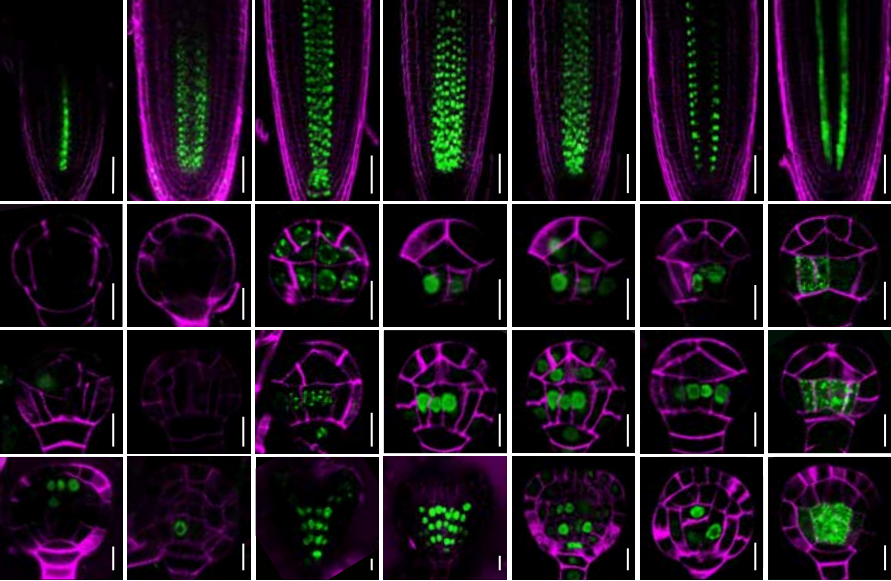
Initiation and regulation of vascular tissue identity in the Arabidopsis embryo
Margot E. Smit, Cristina I. Llavata-Peris, Mark Roosjen, Henriette van Beijnum, Daria Novikova, Victor Levitsky, Daniel Slane, Gerd Jürgens, Victoria Mironova, Siobhan M. Brady, Dolf Weijers
Identification of conserved gene regulatory networks that integrate environmental sensing and growth in the root cambium
Goh Choe, Nam Van Hoang, Yi Zheng, Ana Cecilia Aliaga Fandiño, Jaeryung Hur, Inyoung Sung, Hongryul Ahn, Sun Kim, Zhangjun Fei, Ji-Young Lee
A cell surface arabinogalactan-peptide influences root hair cell fate
Cecilia Borassi, Javier Gloazzo Dorosz, Martiniano M. Ricardi, Laercio Pol Fachin, Mariana Carignani Sardoy, Eliana Marzol, Silvina Mangano, Diana Rosa Rodríguez Garcia, Javier Martínez Pacheco, Yossmayer del Carmen Rondón Guerrero, Silvia M. Velasquez, Bianca Villavicencio, Marina Ciancia, Georg Seifert, Hugo Verli, José M. Estevez
Chloroplast nucleoids are highly dynamic in ploidy, number, and structure during angiosperm leaf development
Stephan Greiner, Hieronim Golczyk, Irina Malinova, Tommaso Pellizzer, Ralph Bock, Thomas Börner, Reinhold G. Herrmann

The Manifold Actions of Signaling Peptides on Subcellular Dynamics of a Receptor Specify Stomatal Cell Fate
Xingyun Qi, Michal Maes, Scott Zeng, Keiko U Torii
ALTERED MERISTEM PROGRAM1 regulates leaf identity independent of miR156-mediated translational repression
Jim P. Fouracre, Victoria J. Chen, R. Scott Poethig
The TARANI/ UBIQUITIN SPECIFIC PROTEASE 14 destabilizes the AUX/IAA transcriptional repressors and regulates auxin response in Arabidopsis thaliana
Parinita Majumdar, Premananda Karidas, Imran Siddiqi, Utpal Nath
DEK influences the trade-off between growth and arrest via H2A.Z-nucleosomes in Arabidopsis
Anna Brestovitsky, Daphne Ezer, Sascha Waidmann, Sarah L. Maslen, Martin Balcerowicz, Sandra Cortijo, Varodom Charoensawan, Claudia Martinho, Daniela Rhodes, Claudia Jonak, Philip A Wigge
mRNA decapping machinery targets transcripts of the LBD3/ASL9 transcription factor to authorize formation of apical hook and lateral roots in Arabidopsis
Zhangli Zuo, Milena Edna Roux, Eleazar Rodriguez, Jonathan Renaud Chevalier, Yasin F. Dagdas, Takafumi Yamashino, Morten Petersen
Lateral mechanical impedance rather than frontal, promotes cortical expansion of roots
Xuanjun Feng, Jing Xiong, Yue Hu, Liteng Pan, Zhengqiao Liao, Xuemei Zhang, Wei Guo, Fengkai Wu, Jie Xu, Erliang Hu, Hai Lan, Yanli Lu
Altering PRC2 activity partially suppresses ddm1 mutant phenotypes in Arabidopsis
Martin Rougée, Leandro Quadrana, Jérôme Zervudacki, Vincent Colot, Lionel Navarro, Angélique Deleris
Specificity in auxin responses is not explained by the promoter preferences of activator ARFs
Amy Lanctot, Mallorie Taylor-Teeples, Erika A. Oki, Jennifer L. Nemhauser
EXO70A2 is critical for the exocyst complex function in Arabidopsis pollen
Vedrana Marković, Fatima Cvrčková, Martin Potocký, Přemysl Pejchar, Eva Kollárová, Ivan Kulich, Lukáš Synek, Viktor Žárský
Golgi anti-apoptotic proteins are evolutionarily conserved ion channels that regulate cell death in plants
Maija Sierla, David L Prole, Nuno Saraiva, Guia Carrara, Natalia Dinischiotu, Aleksia Vaattovaara, Michael Wrzaczek, Colin W Taylor, Geoffrey L Smith, Bart Feys
Genome-wide association study for maize leaf cuticular conductance identifies candidate genes involved in the regulation of cuticle development
Meng Lin, Susanne Matschi, Miguel Vasquez, James Chamness, Nicholas Kaczmar, Matheus Baseggio, Michael Miller, Ethan L. Stewart, Pengfei Qiao, Michael J. Scanlon, Isabel Molina, Laurie G. Smith, Michael A. Gore
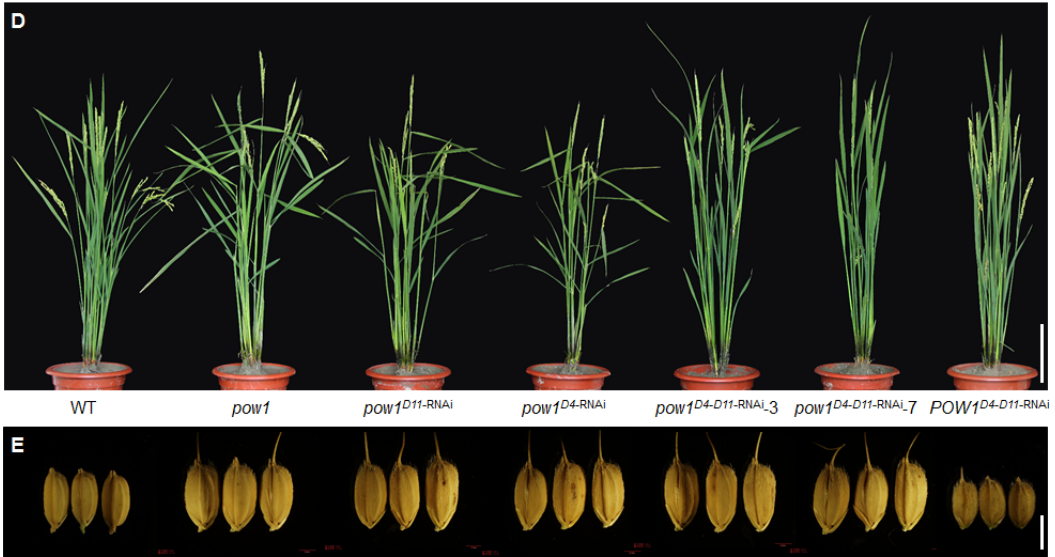
Separable regulation of POW1 in TAF2-mediated grain development and BR-mediated leaf angle formation in rice
Li Zhang, Ruci Wang, Yueming Wang, Yufang Xu, Shuang Fang, Jinfang Chu, Shanguo Yao
Regulation of electron transport is essential for photosystem I stability and plant growth
Mattia Storti, Anna Segalla, Marco Mellon, Alessandro Alboresi, Tomas Morosinotto
A simple method for spray-on gene editing in planta
Cara Doyle, Katie Higginbottom, Thomas A. Swift, Mark Winfield, Christopher Bellas, David Benito-Alifonso, Taryn Fletcher, M. Carmen Galan, Keith Edwards, Heather M. Whitney
qKW9 encodes a pentatricopeptide repeat protein affecting photosynthesis and grain filling in maize
Juan Huang, Gang Lu, Lei Liu, Mohammad Sharif Raihan, Jieting Xu, Liumei Jian, Lingxiao Zhao, Thu M. Tran, Qinghua Zhang, Jie Liu, Wenqiang Li, Cunxu Wei, David M. Braun, Qing Li, Alisdair R. Fernie, David Jackson, Jianbing Yan
Transcriptomic analysis of developing seeds in a wheat mutant RSD32 with reduced seed dormancy
Kazuhide Rikiishi, Manabu Sugimoto, Masahiko Maekawa
Evo-devo & evo
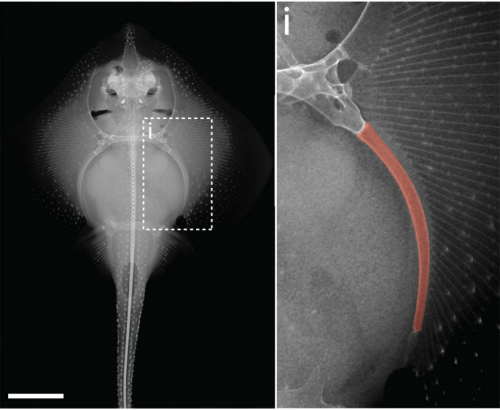
Adult chondrogenesis and spontaneous cartilage repair in the skate, Leucoraja erinacea
Aleksandra Marconi, Amy Hancock-Ronemus, J. Andrew Gillis
Dual Roles of the Retinal Pigment Epithelium and Lens in Cavefish Eye Degeneration
Li Ma, Mandy Ng, Corine M. van der Weele, Masato Yoshizawa, William R. Jeffery
Evolution of the gastrointestinal tract morphology and plasticity in cave-adapted Mexican tetra, Astyanax mexicanus
Misty R. Riddle, Fleur Damen, Ariel Aspiras, Julius A. Tabin, Suzanne McGaugh, Clifford J. Tabin
Developmental transcriptomic analysis of the cave-dwelling crustacean, Asellus aquaticus
Joshua B. Gross, Dennis A. Sun, Brian M. Carlson, Sivan Brodo-Abo, Meredith E. Protas
Comparative transcriptomics reveal distinct patterns of gene expression conservation through vertebrate embryogenesis
Megan E. Chan, Pranav S. Bhamidipati, Heather J. Goldsby, Arend Hintze, Hans A. Hofmann, Rebecca L. Young
The hematopoietic landscape at single-cell resolution reveals unexpected stem cell features in naked mole-rats
Stephan Emmrich, Marco Mariotti, Masaki Takasugi, Maggie E. Straight, Alexandre Trapp, Vadim N. Gladyshev, Andrei Seluanov, Vera Gorbunova
Different roles of eye absent in the basal ovarian follicle and germarium of developing cockroach ovaries
S. Ramos, F. Chelemen, V. Pagone, N. Elshaer, P. Irles, M.D. Piulachs
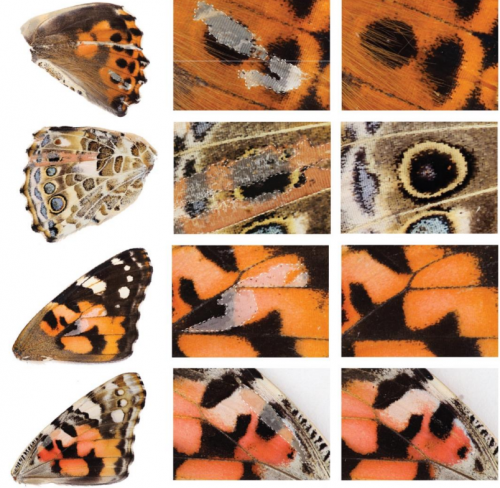
Multiple roles for laccase2 in butterfly wing pigmentation, scale development, and cuticle tanning
Ceili L. Peng, Anyi Mazo-Vargas, Benjamin J. Brack, Robert D. Reed
An improved whole life cycle culture protocol for the hydrozoan genetic model Clytia hemisphaerica
Marion Lechable, Alexandre Jan, Brandon Weissbourd, Julie Uveira, Loann Gissat, Sophie Collet, Laurent Gilletta, Sandra Chevalier, Lucas Leclère, Sophie Peron, Carine Barreau, Régis Lasbleiz, Evelyn Houliston, Tsuyoshi Momose
Environmental specificity in Drosophila-bacteria symbiosis affects host developmental plasticity
Robin Guilhot, Antoine Rombaut, Anne Xuéreb, Kate Howell, Simon Fellous
Synergistic cues from diverse bacteria enhance multicellular development in a choanoflagellate
Ella V. Ireland, Arielle Woznica, Nicole King
Bacterial lipopolysaccharide induces settlement and metamorphosis in a marine larva
Marnie L Freckelton, Brian T. Nedved, You-Sheng Cai, Shugeng Cao, Helen Turano, Rosanna A. Alegado, Michael G. Hadfield
Topological constraints in early multicellularity favor reproductive division of labor
David Yanni, Shane Jacobeen, Pedro Márquez-Zacarías, Joshua S Weitz, William C. Ratcliff, Peter J. Yunker
Bacterial contribution to genesis of the novel germ line determinant oskar
Leo Blondel, Tamsin E. M. Jones, Cassandra G. Extavour
Multiple evidences suggest sox2 as the main driver of a young and complex sex determining ZW/ZZ system in turbot (Scophthalmus maximus)
Paulino Martínez, Diego Robledo, Xoana Taboada, Andrés Blanco, Antonio Gómez-Tato, Blanca Álvarez-Blázquez, Santiago Cabaleiro, Francesc Piferrer, Carmen Bouza, Ana M. Viñas
A screen for gene paralogies delineating evolutionary branching order of early Metazoa
Albert J Erives, Bernd Fritzsch
Primate-restricted KRAB zinc finger proteins and target retrotransposons control gene expression in human neurons
Priscilla Turelli, Christopher Playfoot, Dephine Grun, Charlène Raclot, Julien Pontis, Alexandre Coudray, Christian Thorball, Julien Duc, Eugenia Pankevich, Bart Deplancke, Volker Busskamp, Didier Trono
Cell biology
Spatial organization of cortical actin alignments for the ooplasmic segregation of ascidian Ciona eggs
Hirokazu Ishii, Tomomi Tani
Cell cycle S-phase arrest drives cell extrusion
Vivek K. Dwivedi, Carlos Pardo-Pastor, Rita Droste, Daniel P. Denning, Jody Rosenblatt, H. Robert Horvitz
Transcriptional reprogramming in fused cells is triggered by plasma-membrane diminution
Daniel Feliciano, Isabel Espinosa-Medina, Aubrey Weigel, Kristin M. Milano, Zhonghua Tang, Tzumin Lee, Harvey J. Kliman, Seth M. Guller, Carolyn M. Ott, Jennifer Lippincott-Schwartz
The Somatic Golgi nucleates microtubules that are directed by Kinesin-2 to maintain microtubule polarity within neurons
Amrita Mukherjee, Paul Brooks, Fred Bernard, Antoine Guichet, Paul T. Conduit
DISTINCT ACTIN-DEPENDENT NANOSCALE ASSEMBLIES UNDERLIE THE DYNAMIC AND HIERARCHICAL ORGANIZATION OF E-CADHERIN.
Rumamol Chandran, Girish Kale, Jean-Marc Philippe, Thomas Lecuit, Satyajit Mayor
The primary cilium dampens proliferative signaling and represses a G2/M transcriptional network in quiescent myoblasts
Nisha Venugopal, Ananga Ghosh, Hardik Gala, Ajoy Aloysius, Neha Vyas, Jyotsna Dhawan
Non-stem progenitors enable coordinated changes in gut epithelial cell-type composition
Laura E. Sanman, Ina W. Chen, Jake M. Bieber, Veronica Steri, Byron Hann, Lani F. Wu, Steven J. Altschuler
Cortical cell stiffness is independent of substrate mechanics
Johannes Rheinlaender, Andrea Dimitracopoulos, Bernhard Wallmeyer, Nils M. Kronenberg, Kevin J. Chalut, Malte C. Gather, Timo Betz, Guillaume Charras, Kristian Franze
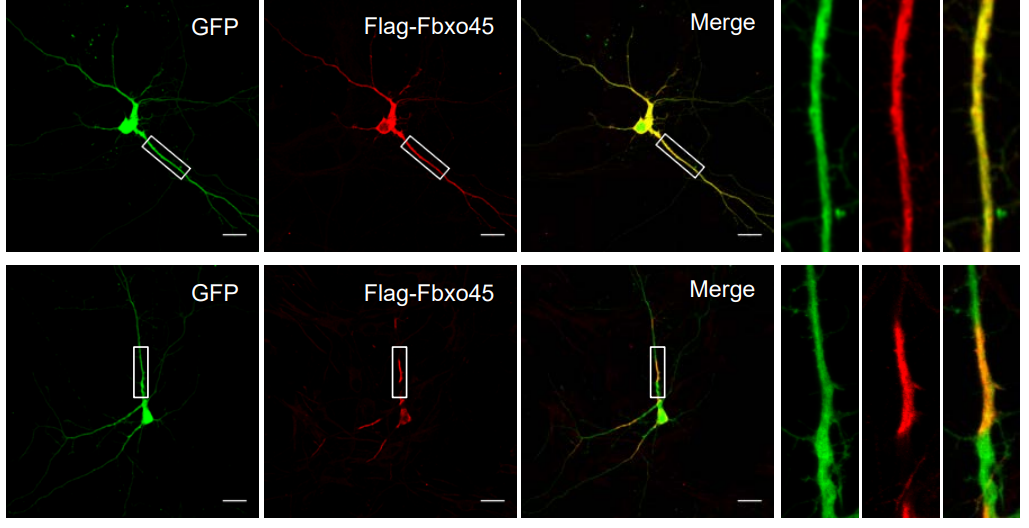
N-cadherin SPRY motifs bind unconventionally-secreted Fbxo45 and regulate multipolar neuron migration
Youn Na, Elif Kon, Hong Cao, Yves Jossin, Jonathan A. Cooper
Mitochondria tether to Focal Adhesions during cell migration and regulate their size
Redaet Daniel, Abebech Mengeta, Patricia Bilodeau, Jonathan M Lee
Serine and glycine are essential for human muscle progenitor cell population expansion
Brandon J. Gheller, Jamie E. Blum, Erica L. Bender, Mary E. Gheller, Esther W. Lim, Michal K. Handzlik, Patrick J. Stover, Martha S. Field, Benjamin D. Cosgrove, Christian M. Metallo, Anna E. Thalacker-Mercer
Ultrastructure of the axonal periodic scaffold reveals a braid-like organization of actin rings
Stéphane Vassilopoulos, Solène Gibaud, Angélique Jimenez, Ghislaine Caillol, Christophe Leterrier
Lgr5+ telocytes are a signaling hub at the intestinal villus tip
Keren Bahar Halpern, Hassan Massalha, Rachel K. Zwick, Andreas E. Moor, David Castillo-Azofeifa, Milena Rozenberg, Lydia Farack, Adi Egozi, Dan R. Miller, Inna Averbukh, Yotam Harnik, Noa Weinberg-Corem, Frederic J. de Sauvage, Ido Amit, Ophir D. Klein, Michal Shoshkes-Carmel, Shalev Itzkovitz
Novel function of TRIP6, in brain ciliogenesis
Shalmali Shukla, Pavel Urbanek, Lucien Frappart, Ronny Hänold, Sigrun Nagel, Shamci Monajembashi, Paulius Grigaravicius, Woo Kee Min, Alicia Tapias, Olivier Kassel, Heike Heuer, Zhao-Qi Wang, Aspasia Ploubidou, Peter Herrlich
Nanotopography enhances dynamic remodeling of tight junction proteins through cytosolic complexes
Xiao Huang, Xiaoyu Shi, Mollie Eva Hansen, Cameron L. Nemeth, Anna Celli, Bo Huang, Theodora Mauro, Michael Koval, Tejal Desai
Modelling
Predicting Evolutionary Transitions in Tooth Complexity With a Morphogenetic Model
Aidan M. C. Couzens, Karen E. Sears, Martin Rücklin
Notch signaling and taxis mechanims regulate early stage angiogenesis: A mathematical and computational model
Rocío Vega, Manuel Carretero, Rui D.M. Travasso, Luis L. Bonilla

Cell-based simulations of Notch-dependent cell differentiation on growing domains
Anna Stopka, Marcelo Boareto, Dagmar Iber
Hierarchical modeling of mechano-chemical dynamics of epithelial sheets across cells and tissue
Yoshifumi Asakura, Yohei Kondo, Kazuhiro Aoki, Honda Naoki
Modeling stripe formation on growing zebrafish tailfins
Alexandria Volkening, Madeline R Abbott, Dorothy Catey, Neil Chandra, Bethany Dubois, Francesca Lim, Bjorn Sandstede
Regeneration comes for free with biological development in a generative Boolean model
Somya Mani, Tsvi Tlusty
Self-sustained Planar Intercalations due to Mechanosignaling Feedbacks Lead to Robust Axis Extension during Morphogenesis
Samira Anbari, Javier Buceta
Cellular crowding guides and debundles the microtubule cytoskeleton
A. Z. Płochocka, N. A. Bulgakova, L. Chumakova
Mathematical modeling of plant cell fate transitions controlled by hormonal signals
Filip Z. Klawe, Thomas Stiehl, Peter Bastian, Christophe Gaillochet, Jan U. Lohmann, Anna Marciniak-Czochra
An integrated multiscale, multicellular skin model
Ryan Tasseff, Boris Aguilar, Simon Kahan, Seunghwa Kang, Charles C. Bascom, Robert J. Isfort
Tuning cell motility via cell tension with a mechanochemical cell migration model
K. Tao, J. Wang, X. Kuang, W. Wang, F. Liu, L. Zhang
Mathematical models for cell migration: a nonlocal perspective
Li Chen, Kevin Painter, Christina Surulescu, Anna Zhigun
Tools & resources
Large-scale transgenic Drosophila resource collections for loss- and gain-of-function studies
Jonathan Zirin, Yanhui Hu, Luping Liu, Donghui Yang-Zhou, Ryan Colbeth, Dong Yan, Ben Ewen-Campen, Rong Tao, Eric Vogt, Sara VanNest, Cooper Cavers, Christians Villalta, Aram Comjean, Jin Sun, Xia Wang, Yu Jia, Ruibao Zhu, Pin Peng, Jinchao Yu, Da Shen, Yuhao Qiu, Limmond Ayisi, Henna Ragoowansi, Ethan Fenton, Senait Efrem, Annette Parks, Kuniaki Saito, Shu Kondo, Liz Perkins, Stephanie E. Mohr, Jianquan Ni, Norbert Perrimon
A resource of targeted mutant mouse lines for 5,061 genes
Marie-Christine Birling, Atsushi Yoshiki, David J Adams, Shinya Ayabe, Arthur L Beaudet, Joanna Bottomley, Allan Bradley, Steve DM Brown, Antje Bürger, Wendy Bushell, Francesco Chiani, Hsian-Jean Genie Chin, Skevoulla Christou, Gemma F Codner, Francesco J DeMayo, Mary E Dickinson, Brendan Doe, Leah Rae Donahue, Martin D Fray, Alessia Gambadoro, Xiang Gao, Marina Gertsenstein, Alba Gomez-Segura, Leslie O Goodwin, Jason D Heaney, Yann Hérault, Martin Hrabe de Angelis, Si-Tse Jiang, Monica J Justice, Petr Kasparek, Ruairidh E King, Ralf Kühn, Ho Lee, Young Jae Lee, Zhiwei Liu, K C Kent Lloyd, Isabel Lorenzo, Ann-Marie Mallon, Colin McKerlie, Terrence F Meehan, Stuart Newman, Lauryl MJ Nutter, Goo Taeg Oh, Guillaume Pavlovic, Ramiro Ramirez-Solis, Barry Rosen, Edward J Ryder, Luis A Santos, Joel Schick, John R Seavitt, Radislav Sedlacek, Claudia Seisenberger, Je Kyung Seong, William C Skarnes, Tania Sorg, Karen P Steel, Masaru Tamura, Glauco P Tocchini-Valentini, Chi-Kuang Leo Wang, Hannah Wardle-Jones, Marie Wattenhofer-Donzé, Sara Wells, Brandon J Willis, Joshua A Wood, Wolfgang Wurst, Ying Xu, IMPC Consortium, Lydia Teboul, Stephen A Murray
Minimal genome-wide human CRISPR-Cas9 library
Emanuel Gonçalves, Mark Thomas, Fiona M Behan, Gabriele Picco, Clare Pacini, Felicity Allen, David Parry-Smith, Francesco Iorio, Leopold Parts, Kosuke Yusa, Mathew J Garnett
A portable and cost-effective microfluidic system for massively parallel single-cell transcriptome profiling
Chuanyu Liu, Tao Wu, Fei Fan, Ya Liu, Liang Wu, Michael Junkin, Zhifeng Wang, Yeya Yu, Weimao Wang, Wenbo Wei, Yue Yuan, Mingyue Wang, Mengnan Cheng, Xiaoyu Wei, Jiangshan Xu, Quan Shi, Shiping Liu, Ao Chen, Ou Wang, Ming Ni, Wenwei Zhang, Zhouchun Shang, Yiwei Lai, Pengcheng Guo, Carl Ward, Giacomo Volpe, Lei Wang, Huan Zheng, Yang Liu, Brock A. Peters, Jody Beecher, Yongwei Zhang, Miguel A. Esteban, Yong Hou, Xun Xu, I-Jane Chen, Longqi Liu
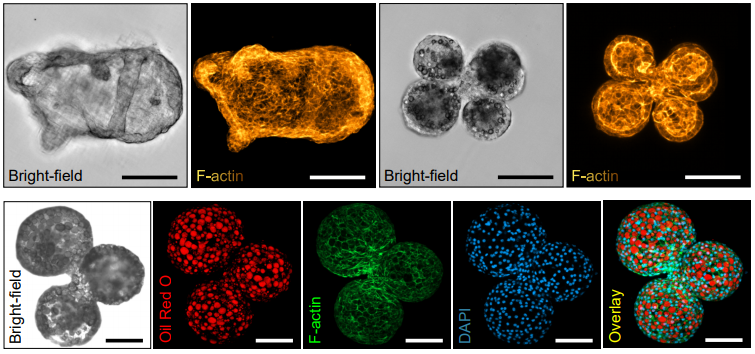
Primary mammary organoid model of lactation and involution
Jakub Sumbal, Aurelie Chiche, Elsa Charifou, Zuzana Koledova, Han LI
Direct synthesis of self-organized blastocyst-like cysts derived from human pluripotent stem cells
Xiaopeng Wen, Shiho Terada, Koki Yoshimoto, Ken-ichiro Kamei
Spatiotemporal Control of CRISPR/Cas9 Function in Cells and Zebrafish using Light-Activated Guide RNA
Wenyuan Zhou, Wes Brown, Anirban Bardhan, Michael Delaney, Amber S. Ilk, Randy R. Rauen, Shoeb I. Kahn, Michael Tsang, Alexander Deiters
Minimized double guide RNA libraries enable scale-limited CRISPR/Cas9 screens
Elin Madli Peets, Luca Crepaldi, Yan Zhou, Felicity Allen, Rasa Elmentaite, Guillaume Noell, Gemma Turner, Vivek Iyer, Leopold Parts
ΔSCOPE: A new method to quantify 3D biological structures and identify differences in zebrafish forebrain development
Morgan S Schwartz, Jake Schnabl, Mackenzie P.H. Litz, Benjamin S Baumer, Michael Barresi
An optimized protocol for iDISCO+ rat brain clearing, imaging, and analysis
Audrey Branch, Daniel Tward, Joshua T Vogelstein, Zhuhao Wu, Michela Gallagher
A versatile tiling light sheet microscope for cleared tissue imaging
Xiaoliang Li, Dongdong Zhang, Chunhui Wang, Xuzhao Li, Mengjie Lai, Yao Weng, Ruili Feng, Xinyi Shirley Zhang, Yanlu Chen, Jing Yu, Dongyue Wang, Rui Nie, Xiao Yang, Yongyi Chen, Bi-Chang Chen, Yi Feng, Bo Zhou, Shang Cai, Jie-Min Jia, Liang Gao
High-Resolution 3D Fluorescent Imaging of Intact Tissues
Danny El-Nachef, Amy M Martinson, Xiulan Yang, Charles E Murry, W Robb MacLellan
MACS: Rapid aqueous clearing system for three-dimensional mapping of intact organs
Jingtan Zhu, Tingting Yu, Yusha Li, Jianyi Xu, Yisong Qi, Yingtao Yao, Yilin Ma, Peng Wan, Zhilong Chen, Xiangning Li, Hui Gong, Qingming Luo, Dan Zhu
The effect of proximity on the function and energy transfer capability of fluorescent protein pairs
Jacob R. Pope, Rachel L. Johnson, W. David Jamieson, Harley L Worthy, Senthilkumar D. Kailasam, Husam Sabah Auhim, Daniel W. Watkins, Pierre Rizkallah, Oliver Castell, D. Dafydd Jones
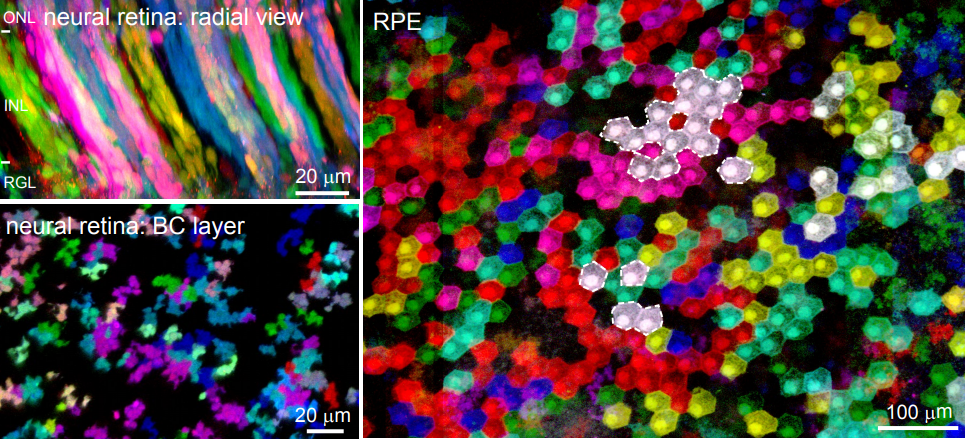
Direct readout of neural stem cell transgenesis with an integration-coupled gene expression switch
Takuma Kumamoto, Franck Maurinot, Raphaëlle Barry, Célia Vaslin, Sandrine Vandormael-Pournin, Mickaël Le, Marion Lerat, Michel Cohen-Tannoudji, Alexandra Rebsam, Karine Loulier, Stéphane Nédelec, Samuel Tozer, Jean Livet
An extensively optimized chromatin immunoprecipitation protocol for quantitatively comparable and robust results
Wim J. de Jonge, Mariël Brok, Patrick Kemmeren, Frank C.P. Holstege
singleCellHaystack: A clustering-independent method for finding differentially expressed genes in single-cell transcriptome data
Alexis Vandenbon, Diego Diez
Cell Tracking Profiler: a user-driven analysis framework for evaluating 4D live cell imaging data
Claire Mitchell, Lauryanne Caroff, Alessandra Vigilante, Jose Alonso Solis-Lemus, Constantino Carlos Reyes-Aldasoro, Fabrice de Chaumont, Alexandre Dufour, Stephane Dallongeville, Jean-Christophe Olivo-Marin, Robert D Knight
Deep generative model embedding of single-cell RNA-Seq profiles on hyperspheres and hyperbolic spaces
Jiarui Ding, Aviv Regev
Research practice & education
bioRxiv: the preprint server for biology
Richard Sever, Ted Roeder, Samantha Hindle, Linda Sussman, Kevin-John Black, Janet Argentine, Wayne Manos, John R. Inglis
The Academic Career Readiness Assessment: Clarifying training expectations for future life sciences faculty
Laurence Clement, Jennie B. Dorman, Richard McGee
Plagiarism in Brazil: A perspective of 25,000 PhD holders across the sciences
Sonia MR Vasconcelos, Hatisaburo Masuda, Martha Sorenson, Francisco Prosdocimi, Marisa Palácios, Edson Watanabe, José Carlos Pinto, José Roberto Lapa e Silva, Adalberto Vieyra, André Pinto, Jesús Mena-Chalco, Mauricio Sant’Ana, Miguel Roig
If your P value looks too good to be true, it probably is: Communicating reproducibility and variability in cell biology
Samuel J. Lord, Katrina B. Velle, R. Dyche Mullins, Lillian K. Fritz-Laylin
Why not…
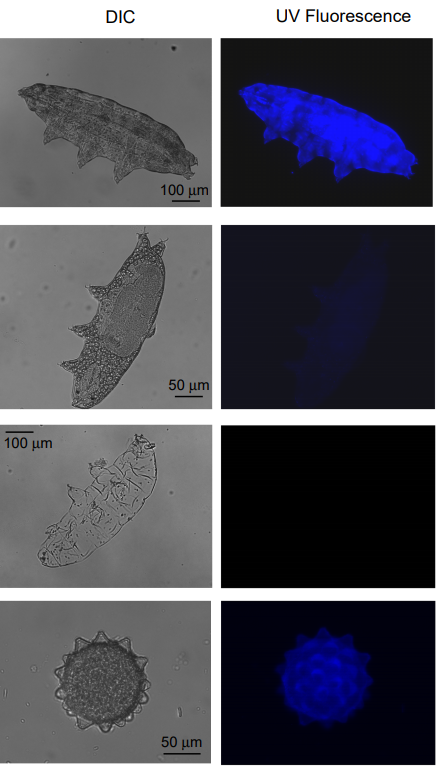
Naturally occurring fluorescence protects the eutardigrade Paramacrobiotus sp. from ultraviolet radiation
Harikumar R Suma, Swathi Prakash, Debasish Giri, Govindasamy Mugesh, Sandeep M. Eswarappa


 (6 votes)
(6 votes)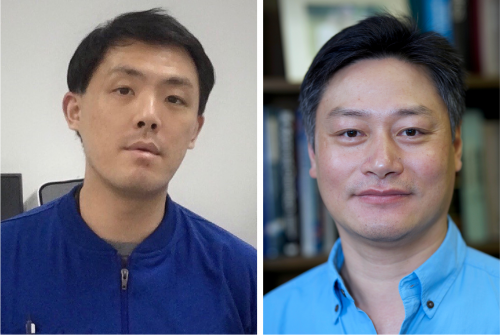
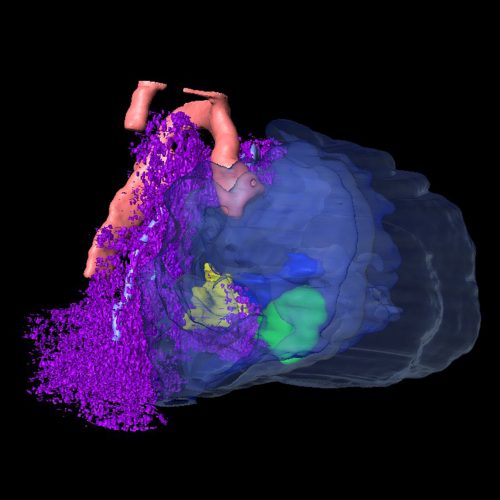
 (No Ratings Yet)
(No Ratings Yet) (1 votes)
(1 votes)